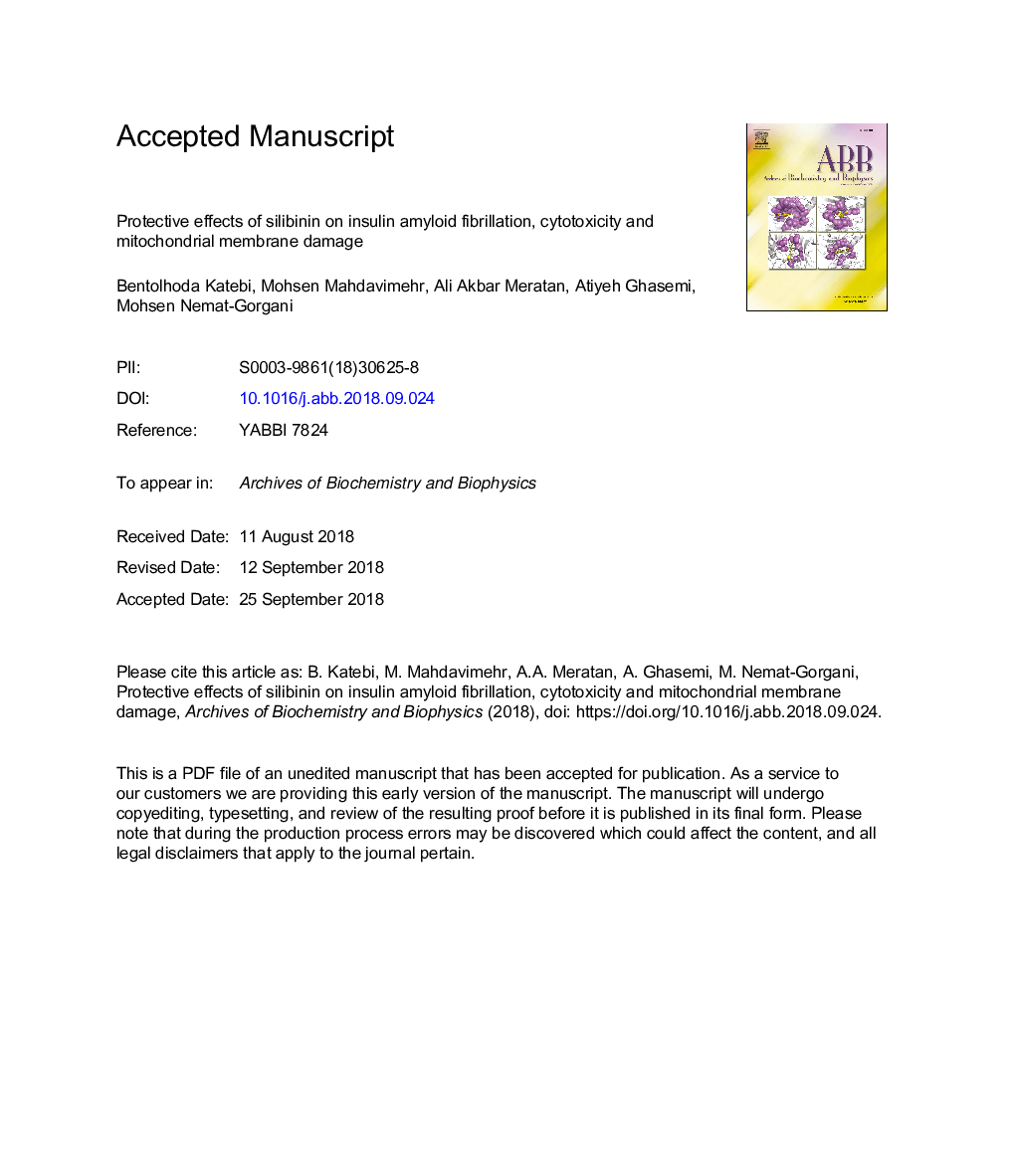| Article ID | Journal | Published Year | Pages | File Type |
|---|---|---|---|---|
| 11019587 | Archives of Biochemistry and Biophysics | 2018 | 40 Pages |
Abstract
A growing body of evidence suggests that secretion and assembly of insulin to amyloid fibrils reduce its efficacy in treating type II diabetes and may lead to dysfunctioning of several organs. The research presented here explores the effects of silibinin on the in vitro amyloid fibrillation and cytotoxicity of bovine insulin fibrils on SH-SY5Y human neuroblastoma cells. Interaction of the resulting structures with rat brain mitochondria was also investigated. Using a range of methods for amyloid detection we showed that insulin fibrillation was significantly inhibited by silibinin in a dose-dependent fashion. Moreover, we found that silibinin was very effective in attenuating insulin fibril-induced neuronal toxicity characterized by decrease of cell viability, the release of lactate dehydrogenase, intracellular reactive oxygen species enhancement, morphological alterations, and apoptotic cell death induction. While insulin fibrillation products showed the capacity to damage mitochondria, the resultant structures produced in the presence of silibinin were totally ineffective. Together, results demonstrate the capacity of insulin fibrils to cause SH-SY5Y cell death by inducing necrosis/apoptosis changes and suggest how silibinin may afford protection. It is concluded that elucidation of such protection may provide important insights into the development of preventive and therapeutic agents for amyloid-related diseases.
Related Topics
Life Sciences
Biochemistry, Genetics and Molecular Biology
Biochemistry
Authors
Bentolhoda Katebi, Mohsen Mahdavimehr, Ali Akbar Meratan, Atiyeh Ghasemi, Mohsen Nemat-Gorgani,
